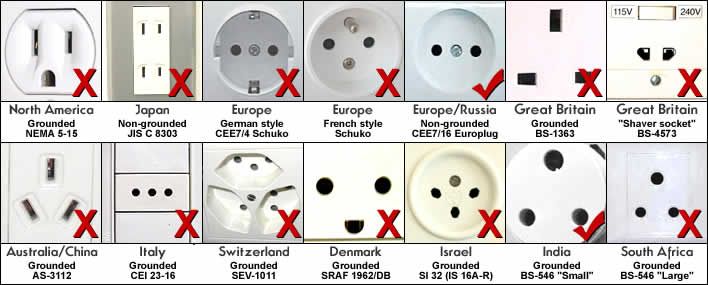
* Voltage: 220-240 Volts (U.S./Canada are 110-120 Volts)
* Primary Socket Types: Indian, Europlug
* Multi-voltage appliances (laptops, etc.): Plug adapter
Click socket type links to view adapter for that type
* 110-120V electronics: Plug adapter + step-down transformer
* Hair dryers, curling irons, etc.: Plug adapter + voltage converter
But the shape of the socket is only half the story!
Electrical sockets (outlets) in Nepal usually supply electricity at between 220 and 240 volts AC. If you're plugging in an appliance that was built for 220-240 volt electrical input, or an appliance that is compatible with multiple voltages, then an adapter is all you need.
But travel plug adapters do not change the voltage, so the electricity coming through the adapter will still be the same 220-240 volts the socket is supplying. North American sockets supply electricity at between 110 and 120 volts, far lower than in most of the rest of the world. Consequently, North American appliances are generally built for 110-120 volts.
source: http://www.adaptelec.com/index.php?main_page=document_general_info&products_id=118

Wow, I almost forgot about the change in voltage! I already got my travel plug adapters for my upcoming trip, but trying to use them without converters could have ended very badly! Thank you for the advice!
ReplyDelete